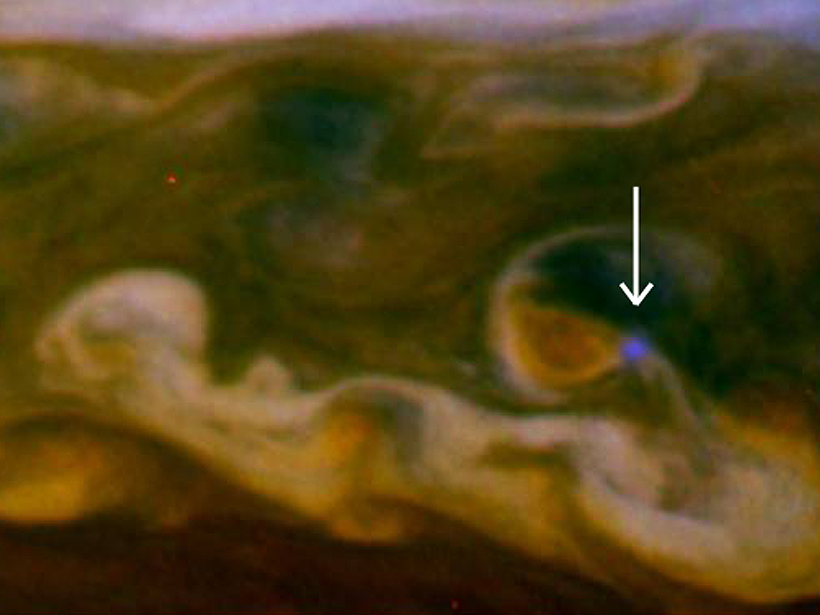Source: Journal of Geophysical Research: Space Physics
Jupiter and Saturn—and other gas giant planets like them in alien solar systems—may have a strange phenomenon related to lightning in their upper atmospheres known as “elves.”
This phenomenon was first discovered in the upper reaches of Earth’s atmosphere in the early 1990s. Unlike conventional lightning, which strikes from cloud to cloud or cloud to ground, elves appear high above thunderclouds at the edge of space as an enormous, expanding red ring. First recorded from the space shuttle Discovery, the glow can reach 500 kilometers in diameter in 1 millisecond.
Elves occur when lightning in a thunderstorm triggers a disturbance in the electric and magnetic fields called an electromagnetic pulse (EMP). This pulse reaches into the upper layers of the Earth’s atmosphere and expands outward, jolting electrons and exciting nitrogen molecules, which emit a faint red glow. This light also provides the grounds for the phenomenon’s whimsical acronym: Emissions of Light and Very low frequency perturbations due to Electromagnetic pulse Sources.
Luque et al. used simulations to explore whether elves can also occur on Jupiter and Saturn, where conventional lightning has previously been spotted. They modeled EMPs in the atmospheres of those gas giant planets and found that the effects were much stronger than on Earth, creating a layer of ionization high above the storms. The resulting elve was enormous—expanding to a diameter of nearly 4000 kilometers. Elves are especially bright at Saturn, and NASA’s Cassini orbiter is almost capable of imaging them, the authors’ calculations show. They also suspect that elves probably occur on similar planets—cold gas giants far from their host stars—in other solar systems. (Journal of Geophysical Research: Space Physics, doi:10.1002/2014JA020457, 2014)
—Mark Zastrow, Freelance Writer
Citation: Zastrow, M. (2015), Gaseous planets may have huge luminous rings caused by lightning, Eos, 96, doi:10.1029/2015EO032801. Published on 15 July 2015.
Text © 2015. The authors. CC BY-NC 3.0
Except where otherwise noted, images are subject to copyright. Any reuse without express permission from the copyright owner is prohibited.

